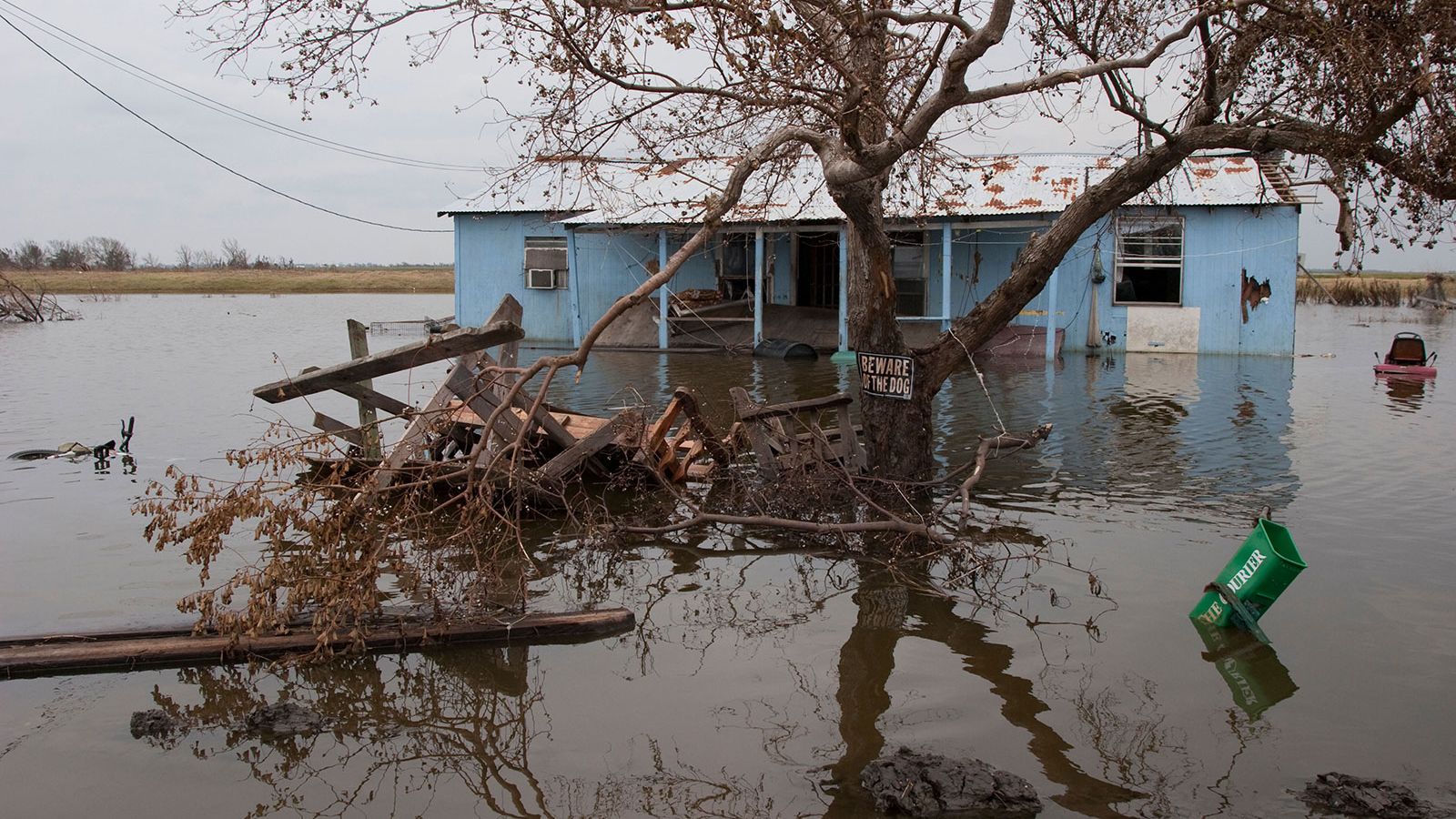Think of “ghost towns” and images of dusty, lost-to-time towns, like those in America’s Wild West, may come to mind.
Indeed, in the second half of the 19th century, a slew of boomtown-gone-bust mining towns were deserted by residents as natural resources and economic viability dried up. Over time, some of these relics have found new life as fun and kitschy tourist attractions.
And while iterations of such abandoned settlements are found on every continent, with varying manmade and natural causes to blame, a new era of ghost towns is now emerging that, while eerie, feels far off from good touristic fun.
Climate change and ensuing environmental disasters – marked by an increasing frequency and intensity of destructive floods, droughts, storms, wildfires and extreme temperatures – are now fueling what experts say are just the first waves of places abandoned due to climate displacement.
“We are going to see a movement – it’s already happening – where people are moving away from these areas that are most impacted by storms, by rising sea levels and floods, but also by constant fire, smoke inhalation – all of that,” says Gaia Vince, author of “Nomad Century: How Climate Migration Will Reshape Our World.”
She cites recent examples like wildfires in Hawaii, California and Australia, and floods in Bangladesh, as some of the latest triggers for population displacements.
“How many people are going to return to Lahaina in Hawaii after the fires there?” she questions. “I don’t think it’ll be 100% of the population that left. Some people will not be able to.”
Abandoning a settlement is typically a last-resort scenario, made only once residents have exhausted all other options, say experts.
In some instances, resettlements have been aided or forced in “managed retreats” or “planned relocations,” in which financial and logistical support is provided by government agencies. Jack DeWaard, scientific director at international nongovernmental organization the Population Council, and an expert on climate and environmental migration and displacement, notes that this involves government entities “working collectively with communities to relocate them entirely.”
For the displaced, “the costs of migration, economically and psychologically, are substantial,” he says.
“They’re forced to leave their traditions, their network of family and friends, their ancestors’ graves, their language, all of that, because it’s become unlivable. That is very traumatic, it’s very difficult,” adds Vince.
More than 20 million people are forced to leave their homes due to extreme weather events each year, according to the United Nations. Researchers have projected that by the end of the century, somewhere in the range of 3 to 6 billion people will be “left outside the ‘human climate niche’” that best supports life.
“It doesn’t mean that 3 to 6 billion people will have to move, but it does mean a lot of people have to move,” Vince notes. This, she says, will disproportionality affect communities of color and/or those who are already facing poverty.
“Typically, migration and displacement, these are processes that are rooted in inequality,” explains DeWaard, who adds that the climate crisis is only “going to exacerbate the existing inequalities of today.”
‘An inherent fascination with ruination’
Through the lens of tourism, many areas that have been historically reliant on tourism economies?will also be vulnerable to abandonment says Vince. She cites examples like Alpine ski resorts, where snowfall is no longer conducive to skiing, or traditional holiday spots like Spain and the Mediterranean that have been experiencing deadly heatwaves and wildfires.
“Tourists are going to choose other places,” she says. “They don’t want to sit in a heatwave, with having to be evacuated because of forest fires.”
But there is also a niche segment of so-called “dark tourism” that could arise around such climate change-born ghost towns.
“There is an inherent fascination with ruination, where ruins of the past often tell a story of our misdeeds and misfortunes,” explains Philip Stone of the University of Central Lancashire, where he runs the Institute for Dark Tourism Research. “Climate change will undoubtedly cause death of landscapes where we shall mourn our environmental decline.”
While the pursuit of dark tourism, which the Institute defines as “tourist sites of death, disaster, or the seemingly macabre,” can raise ethical questions, Stone ventures to say that such touristic curiosity can actually be beneficial.
“The visual impact of climate change-induced landscapes serves as a warning of our industrialization,” he says. “Visiting such places now can shine a critical light on the effects of climate change and, in so doing, offer educational experiences to the contemporary visitor.”
Here are five global ghost towns that have been created as climate change reshapes the world – the likely harbingers of many more to come. (Note that in some of these destinations, some holdout townsfolk still remain.)
Vunidogoloa, Fiji
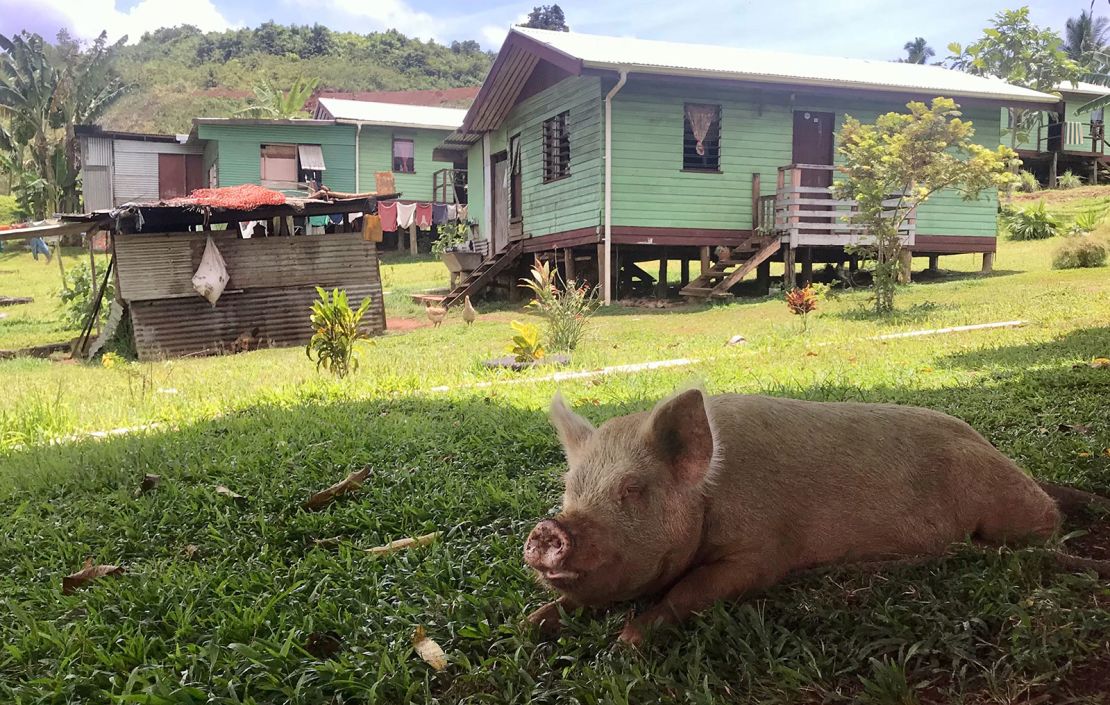
The South Pacific island nation of Fiji is particularly vulnerable to the climate change effects of rising sea levels and intensifying cyclones.
Dozens of coastal communities in Fiji have been earmarked for planned relocations to higher ground by the Fijian government, as their underwater fates loom ever nearer.
The small seaside village of Vunidogoloa, on Vanua Levu, the country’s second-biggest island, was the first of the bunch to be relocated, to a lush inland hillside, in 2014.
Today, remnants of the original dilapidated village, now overrun with vegetation, are all that remain on the old site where some 150 people once lived.
Isle de Jean Charles, Louisiana
Communities along coastal Louisiana have been particularly devastated by climate change’s sea level rise, coastal erosion and battering storms and hurricanes.
Isle de Jean Charles, an island in the Gulf of Mexico about 80 miles (129 kilometers) south of New Orleans, once spanned 22,000 acres. But today, only 320 acres of the sinking island remain.
The local community, where residents claimed Native American ancestry, was awarded a government grant, affording them funding to develop a newly established settlement dubbed “The New Isle,” set about 40 miles north of the island, on higher ground.
As of October 2023, all but four of Isle de Jean Charles’s original families have relocated there.
Cotul Morii, Moldova
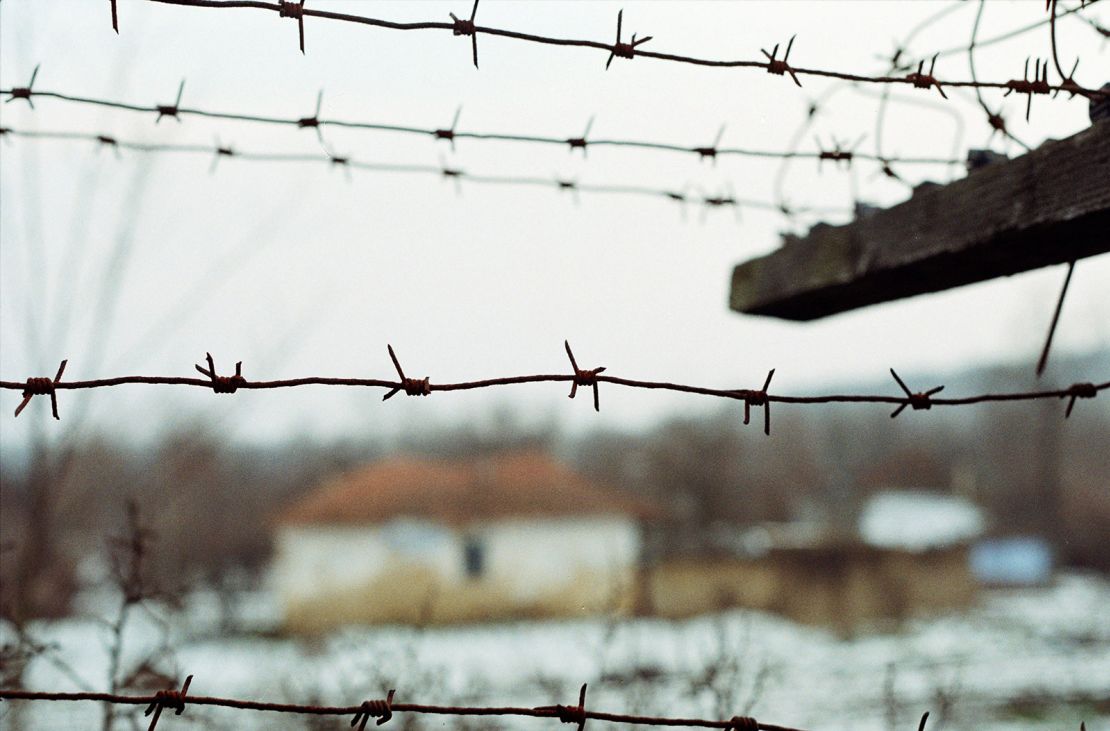
Among the most climate change-vulnerable countries in Europe, Moldova faces ongoing climate risks like heatwaves, storms, droughts, and, most especially, floods, having recorded three major flooding events in the last 20 years.
The impacts of such flooding in the heavily agricultural nation have led to widespread destruction and expense, with some villages deemed damaged beyond repair. One such settlement was Cotul Morii, a village on the banks of the Prut River that was submerged by catastrophic flooding in 2010.
Rather than rebuild, the government mandated that a new Cotul Morii village be reconstructed about nine miles away.
Chacaltaya Ski Resort, Bolivia
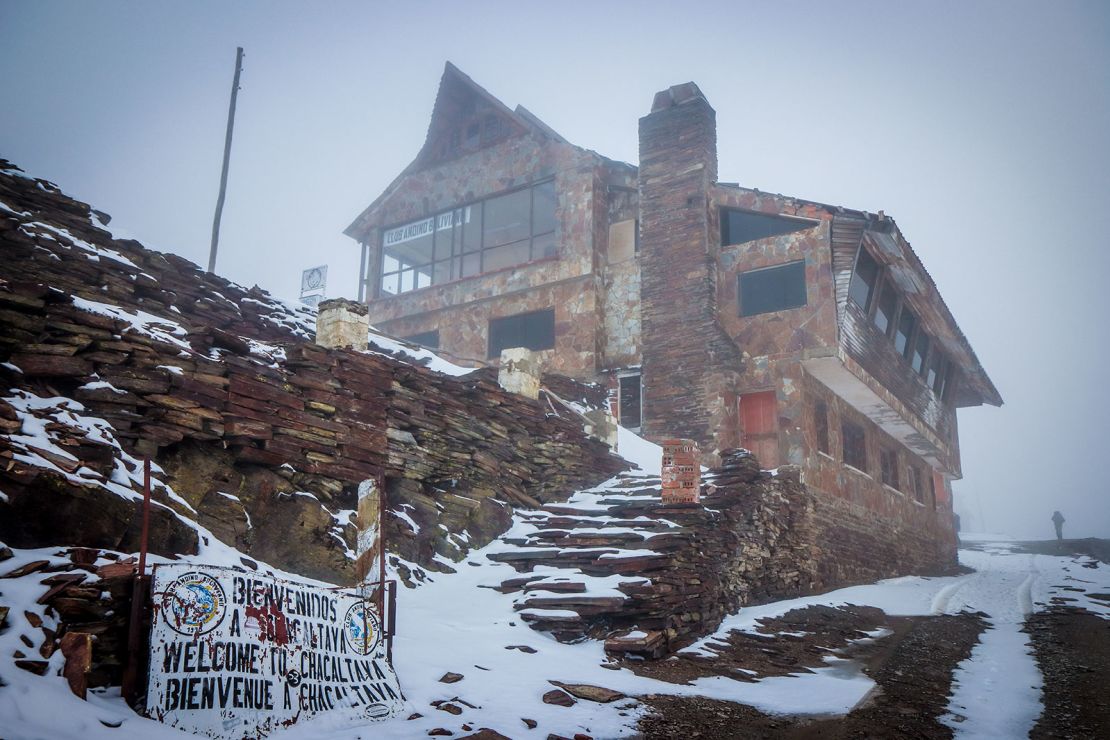
Once the world’s highest ski resort, the 17,388-foot-high lodge on Mount Chacaltaya opened in the 1930s as a popular – and only – ski resort in Bolivia’s Andes.
For decades, the mountaintop resort, just north of La Paz, welcomed skiers and sledders in the winter months to crisscross its snowy pistes, until shuttering in 2009.
That was the same year the mountain’s 18,000-year-old Chacaltaya glacier completely melted away due to climate change – with much of the snow disappearing along with it.
Today, the one-time resort, with its abandoned café, bar, and ski lifts, stands in testimony to what was.
Valmeyer, Illinois
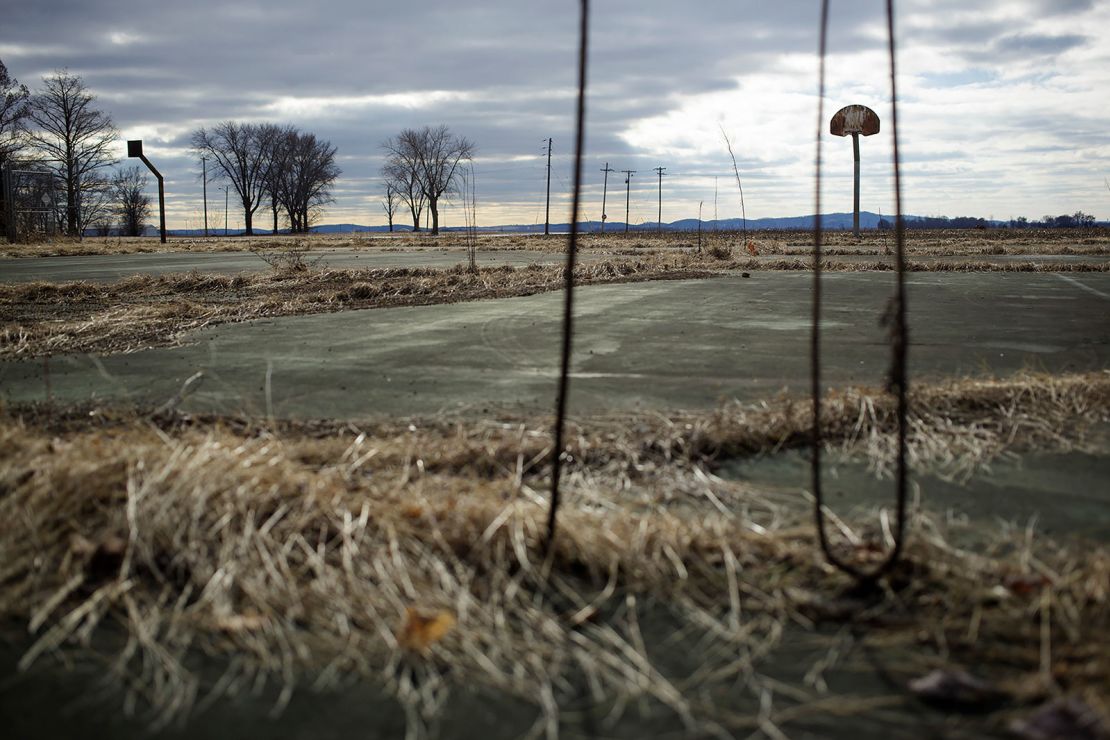
Climate change has been linked to more volatile cycles of droughts and flooding along the Mississippi River, North America’s longest river.
When the Mississippi’s Great Flood of 1993 inundated the small Illinois town of Valmeyer, damaging the majority of its buildings, town residents – with government funding to back them – decided to reconstruct the 900-person town on a neighboring bluff.
While the flood event itself perhaps predates climate change, 30 years later, the new town of Valmeyer is considered to be a textbook case for how town relocations for climate resilience might be successfully conducted today.
Today, the new Valmeyer is thriving; the old town, set within a natural floodplain, is primarily used for farming and recreation.
